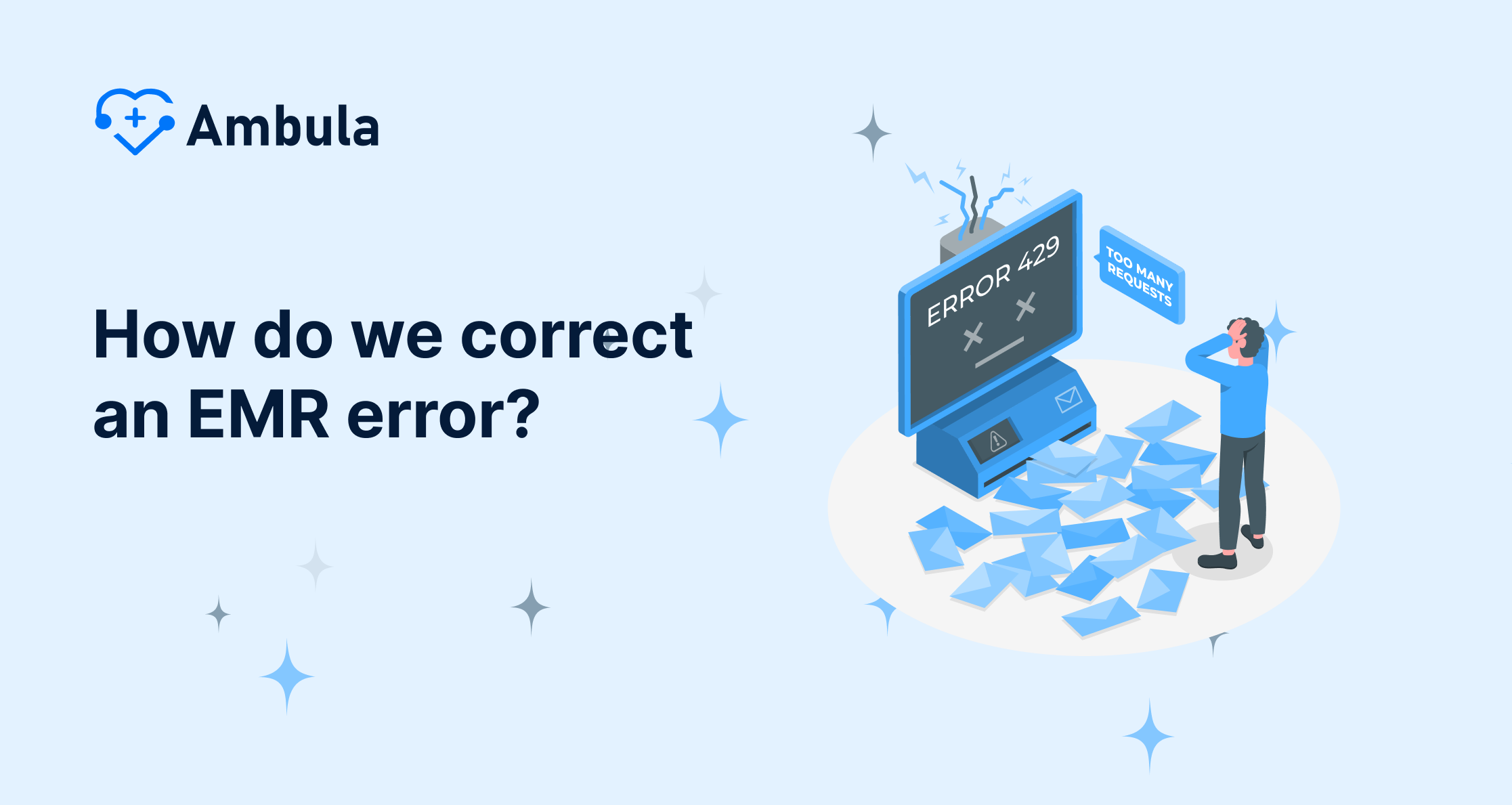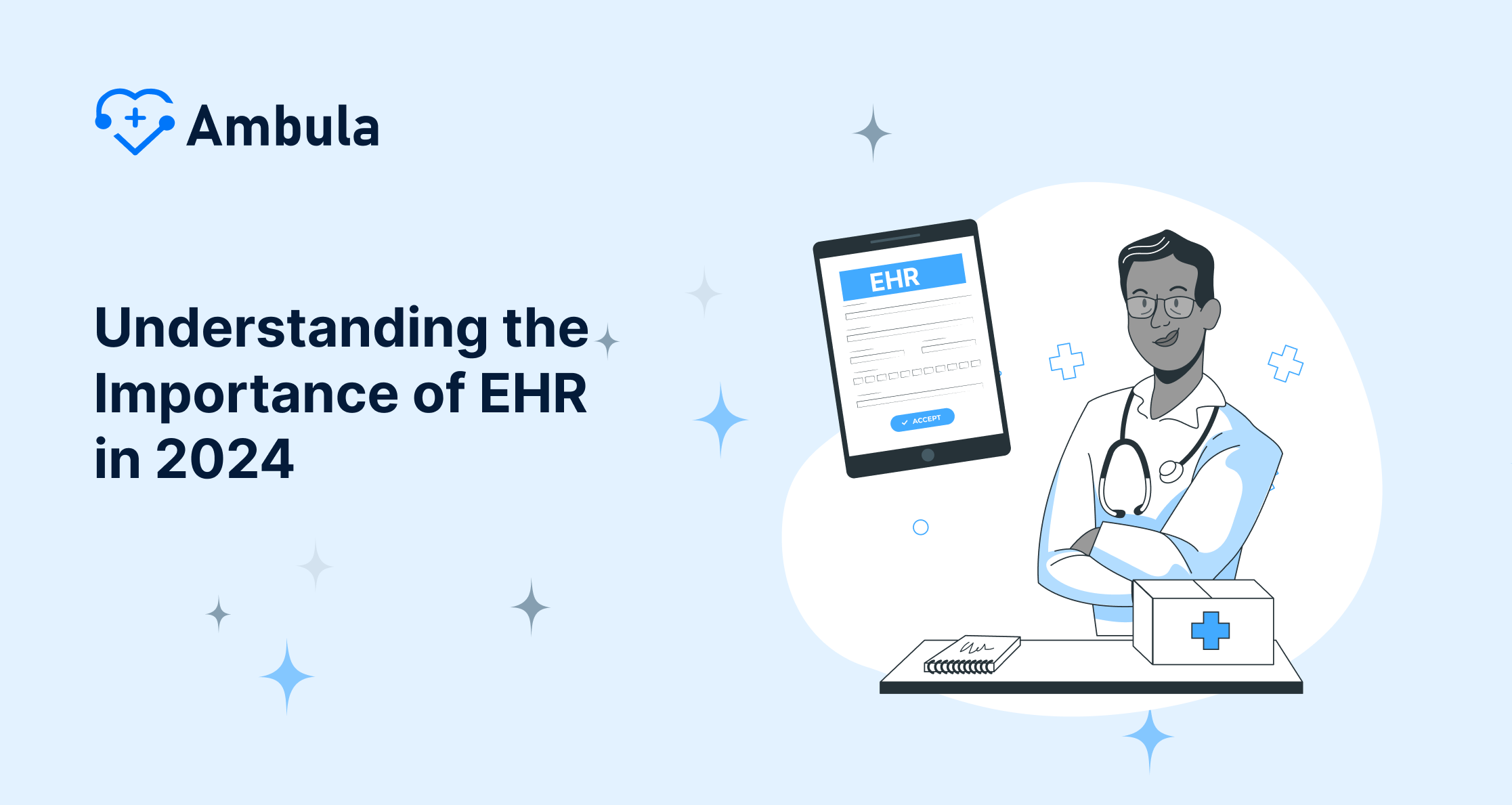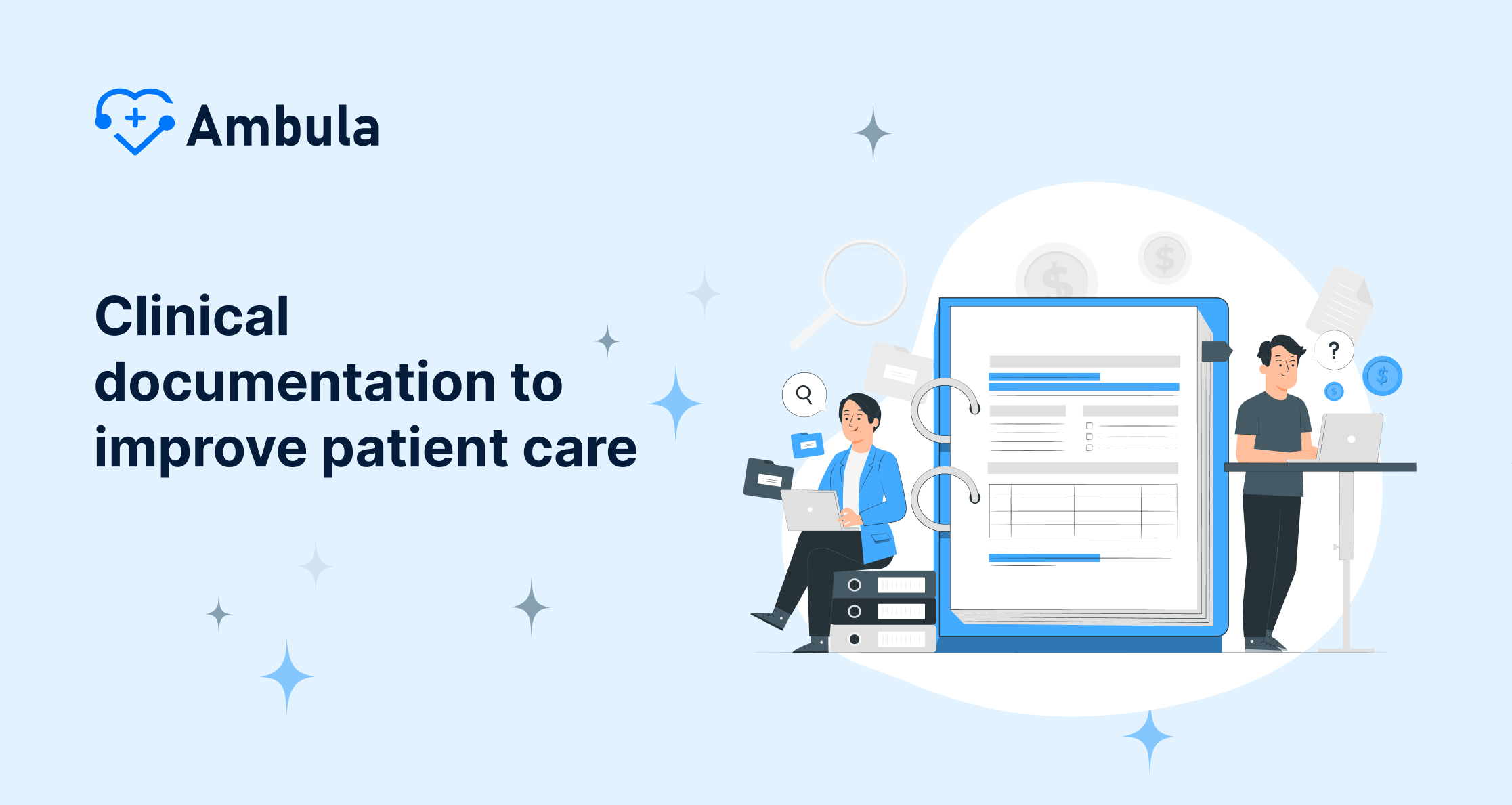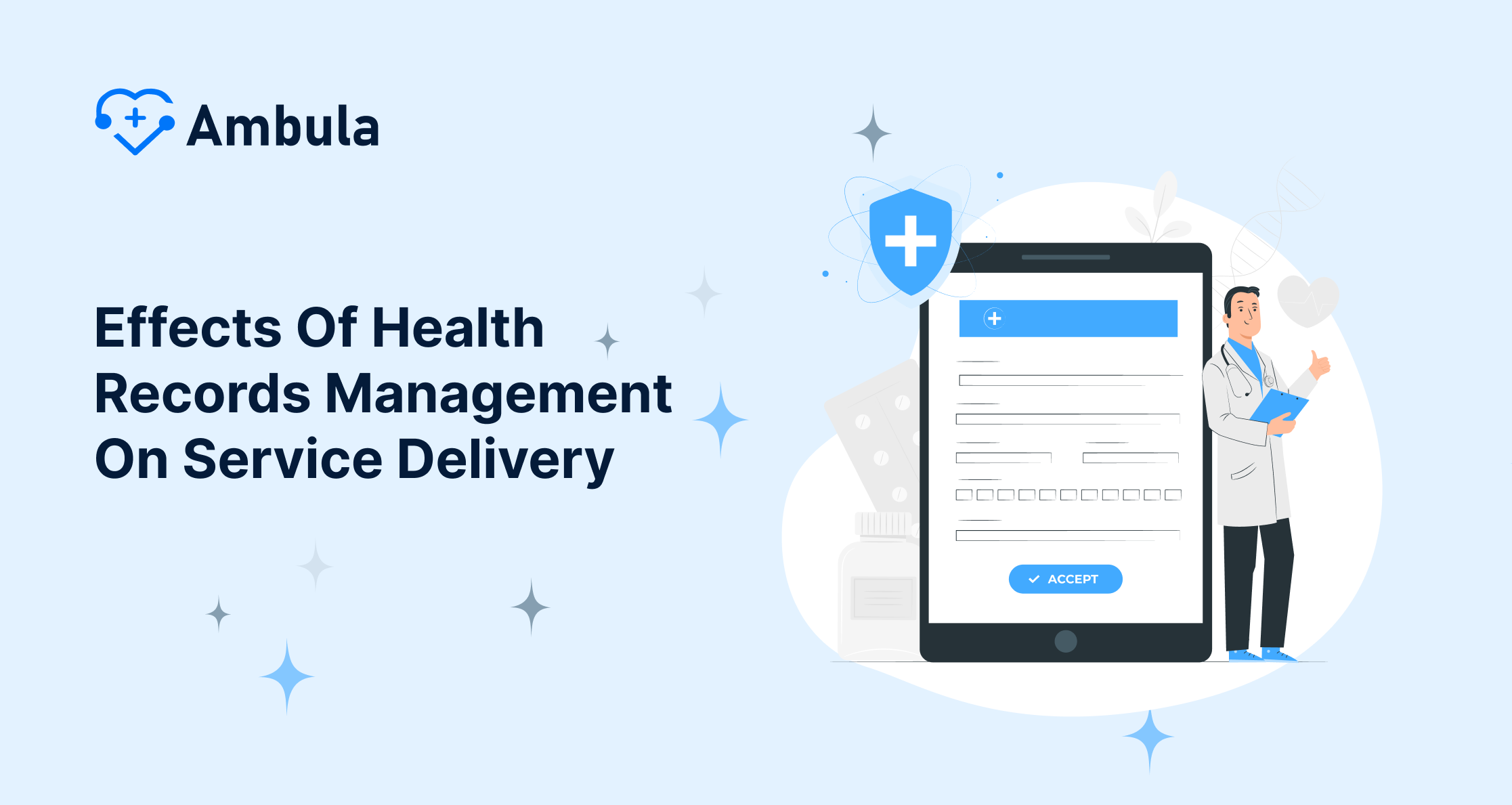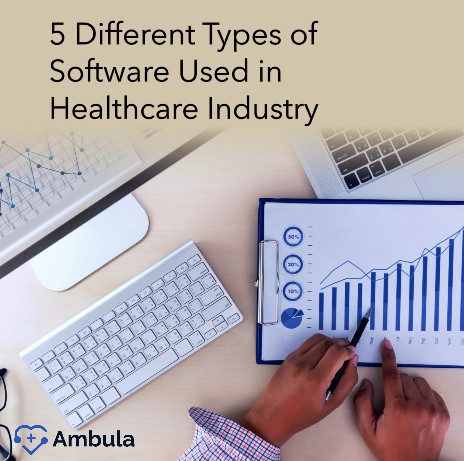
Software plays a vital role in healthcare today. From electronic health records (EHRs) to practice management software to telemedicine platforms, software is essential for managing patient data, improving clinical decision-making, and streamlining administrative tasks.
Technology is transforming healthcare in many ways. For example, EHRs have made it easier for doctors to access patient records and coordinate care. Telemedicine is expanding access to healthcare for patients in rural or underserved areas. Artificial intelligence (AI) is used to develop new tools for diagnosing diseases, predicting patient outcomes, and personalizing treatments. Overall, software is an essential tool for doctors and other healthcare professionals. By using software effectively, you can improve patient care, reduce your workload, and stay up-to-date on the latest medical knowledge.
1. Electronic Health Records (EHR) Software
An electronic health record (EHR) is a digital version of a patient’s medical record. It contains all of the patient’s medical information, including their medical history, demographics, medications, allergies, lab results, and imaging reports. EHRs can be accessed by authorized healthcare providers from anywhere, which can improve care coordination and reduce medical errors.
EHRs offer many advantages for healthcare providers and patients alike. Here are some of the key benefits of EHRs:
- Improved patient care: EHRs can help you to provide better patient care by giving you access to all of a patient’s medical information in one place. This can help you to make more informed clinical decisions and avoid medical errors.
- Increased efficiency: EHRs can help you to save time and be more efficient by automating many administrative tasks, such as scheduling appointments, billing patients, and managing medical records.
- Enhanced care coordination: EHRs can help you improve care coordination by making sharing patient information with other healthcare providers easier. This is especially important for patients who see multiple doctors or have complex medical needs.
- Reduced costs: EHRs can help to reduce healthcare costs by reducing the need for duplicate tests and procedures.
- Improved patient engagement: EHRs can help to improve patient engagement by giving patients access to their medical records. This can help patients to be more informed about their health and to take an active role in their care.
Examples of EHR software
There are many different EHR software systems available. Some of the most popular EHR software systems include:
- Ambula
- Epic
- Cerner
- Allscripts
- MEDITECH
- eClinicalWorks
2. Practice Management Software
Practice management software (PMS) automates many administrative tasks, such as scheduling appointments, billing patients, managing medical records, and generating reports. PMS software can help healthcare providers improve efficiency, increase revenue, enhance patient satisfaction, and make better decisions. Some popular PMS software systems include Kareo, Athenahealth, Nextech, Practice Fusion, and SimplePractice.
Benefits of PMS software:
- Improved efficiency: PMS software can save healthcare providers time and improve efficiency by automating many administrative tasks. This frees up providers’ time so that they can focus on patient care.
- Increased revenue: PMS software can help healthcare providers increase revenue by making billing patients and tracking payments easier. PMS software can also help providers identify and eliminate revenue leaks.
- Enhanced patient satisfaction: PMS software can help healthcare providers improve patient satisfaction by making it easier for patients to schedule appointments, access their medical records, and communicate with providers. PMS software can also help providers provide more personalized care to their patients.
- Better decision-making: PMS software can help healthcare providers make better decisions about their practices by providing data and insights into their operations. This data can help providers identify areas where they can improve their efficiency, profitability, and quality of care.
3. Medical Imaging Software
Medical imaging software is used to acquire, process, display, and analyze medical images. Medical imaging software is used by a variety of healthcare professionals, including radiologists, cardiologists, neurologists, and oncologists, to diagnose and treat diseases.
Medical imaging software can be used to generate a variety of different types of images, including X-rays, CT scans, MRI scans, and ultrasound images. Medical imaging software can also be used to create 3D models of the body, which can be used for surgical planning and other purposes.
Medical imaging software has revolutionized healthcare in many ways. Some of the key benefits of medical imaging software include:
- Improved diagnostic accuracy: Medical imaging software can help healthcare professionals to diagnose diseases more accurately and efficiently. For example, medical imaging software can detect tumors and other abnormalities that may be too small to be seen with the naked eye.
- Earlier detection: Medical imaging software can help to detect diseases earlier when they are more treatable. For example, medical imaging software can be used to detect cancer in its early stages, when it is most curable.
- Reduced need for invasive procedures: Medical imaging software can often be used to diagnose diseases without the need for invasive procedures, such as surgery or biopsies. This can reduce the risk of complications and improve patient outcomes.
- Improved treatment planning: Medical imaging software can be used to create 3D models of the body and to plan surgeries and other treatments. This can help to improve the accuracy and safety of these procedures.
Some of the most popular medical imaging software systems include:
- PACS (Picture Archiving and Communication System)
- 3D Slicer
- Osirix
- Vitrea
- Synapse
4. Telemedicine software
Telemedicine software is a powerful tool that can be used to improve access to healthcare, reduce costs, and improve efficiency for both healthcare providers and patients.
Benefits of telemedicine software for healthcare providers:
- Increased revenue by expanding their reach to new patients and reducing the need for in-person visits.
- Reduced costs by eliminating the need for office space and staff.
- Improved efficiency by reducing time spent on administrative tasks, such as scheduling appointments and billing patients.
Benefits for patients
Benefits for patients include improved access to care, reduced costs, and convenience. Telemedicine software can help patients access care from anywhere, regardless of their location or transportation options. It can also help patients to reduce costs by eliminating the need for travel and by reducing the need for copayments and other fees.
Telemedicine software is being used successfully by healthcare providers all over the world. For example, the Veterans Health Administration (VHA), the Indian Health Service (IHS), and American Well are all using telemedicine software to provide care to patients in rural or underserved areas. These programs have shown that telemedicine can improve patient outcomes and reduce costs.
Overall, telemedicine software is a valuable tool that can help to improve the healthcare system for both providers and patients.
5. Pharmacy management software
Pharmacy management software (PMS) is a critical tool for pharmacists and pharmacies of all sizes. It can help pharmacists to improve accuracy, increase efficiency, and improve patient satisfaction.
PMS software helps pharmacists ensure patients receive the medications they need safely and efficiently. It automates many administrative tasks, freeing up pharmacists’ time to focus on patient care. PMS software also makes it easier for patients to get the medications they need, for example, by creating online portals where patients can order refills and track their prescriptions.
PMS software is being used effectively by pharmacies of all sizes, including large chains such as CVS Health and Walgreens Boots Alliance, as well as independent pharmacies.
PMS software is a vital tool for ensuring that patients receive the medications they need safely and efficiently. It can help pharmacists to improve accuracy, increase efficiency, and improve patient satisfaction.
The effects of these software types on patient experience
Advanced software is transforming patient care in several ways. For example, electronic health records (EHRs) give healthcare providers a complete view of a patient’s medical history, which can help them to make more informed care decisions. Telemedicine software allows patients to access care from anywhere, which can be especially beneficial for patients in rural or underserved areas. Pharmacy management software helps pharmacists ensure patients receive the medications they need safely and efficiently.
Overall, advanced software is helping to improve patient care by:
- Making healthcare more accessible and convenient
- Improving the accuracy and efficiency of care
- Empowering patients to take a more active role in their care
The role of software in removing barriers and enhancing communication between patients and healthcare providers
Software can play a vital role in removing barriers and enhancing communication between patients and healthcare providers. For example, patient portals allow patients to communicate with their providers, access their medical records, and schedule appointments online. Telemedicine software allows patients to have video consultations with their providers, which can reduce the need for travel and make it easier for patients to access care from remote locations.
Overall, the software is helping to remove barriers and enhance communication between patients and healthcare providers by:
- Making it easier for patients to communicate with their providers
- Giving patients access to their medical records
- Reducing the need for travel and making it easier for patients to access care from remote locations
Stats:
- A 2023 survey by HIMSS Analytics found that 99% of US hospitals have adopted EHRs.
- A 2022 survey by Software Advice found that 92% of pharmacies use pharmacy management software.
- A 2022 survey by McKinsey & Company found that 70% of patients are interested in using telemedicine.
Conclusion
Software is playing an increasingly important role in healthcare. Advanced software is helping to improve patient care in several ways, including by making healthcare more accessible and convenient, improving the accuracy and efficiency of care, and empowering patients to take a more active role in their care.
Software can also play a vital role in removing barriers and enhancing communication between patients and healthcare providers. For example, patient portals and telemedicine software can make it easier for patients to communicate with their providers, access their medical records, and schedule appointments.
Software plays a critical role in improving and streamlining the healthcare industry. As technology advances, we expect to see even more innovative and groundbreaking software solutions that will further improve the patient experience and healthcare quality.

